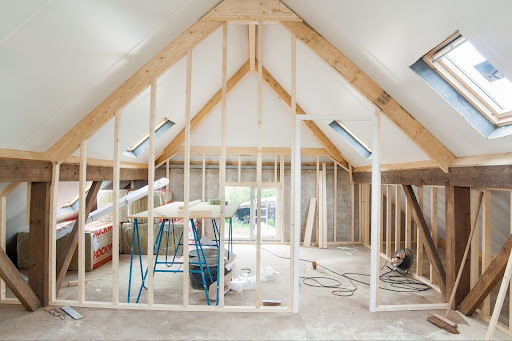Ways to Prepare Before Your Home Makeover
Embarking on a home makeover is an exciting journey, filled with the promise of transforming your living space into the home of your dreams. It’s a chance to infuse new life into your surroundings, tailor spaces to your evolving needs, and express your style.
However, as thrilling as a home remodel is, it also comes with its fair share of challenges. From budgeting to design choices and logistical considerations, a successful home remodeling project requires thorough preparation and thoughtful decision-making.
At the heart of every successful remodel is a well-laid-out plan. Preparation is key to navigating the complexities of transforming your home. It involves understanding your goals, setting a realistic budget, choosing the right professionals to work with, and anticipating the unexpected. No matter the scope of your remodeling project, you should carefully consider and plan each step of the journey.
In this guide, we’ll explore the essential steps to prepare for your home makeover. We’ll delve into the exciting world of home remodeling, offering insights and tips to help you embark on this transformative journey confidently.
With the proper preparation, your remodel can be a smooth, enjoyable experience that culminates in the home you’ve always wanted. Let’s begin this adventure together to turn your vision into a reality.
1. Define your vision and goals
Embarking on a home makeover journey starts with a clear vision and well-defined goals. Having a concrete idea of what you want to achieve with your remodel is essential. This clarity guides the entire process and ensures the end result aligns with your expectations and lifestyle needs.
Crafting your vision
Begin by asking yourself what you want to change and why. Are you looking to update a dated kitchen, create more living space, or simply refresh the aesthetics of your home? Visualize the end result and how it will enhance your daily life. This vision will be the foundation of your remodeling project.
Setting realistic and achievable goals
Once your vision is clear, set realistic and achievable goals. Consider factors like budget, time constraints, and the structural limitations of your home. Balance your aspirations with practicality. Setting achievable goals helps you avoid disappointment and makes the remodeling process smoother.
Gathering inspiration and ideas
Explore home design websites, magazines, and social media platforms like Pinterest and Instagram for inspiration. Attend home shows, visit showrooms, and talk to friends who have undergone similar projects. Create a mood board or a collection of ideas that resonate with your style and needs. This compilation of ideas will help you communicate your vision to designers and contractors.
Remember, a successful home makeover starts with a clear vision and realistic goals. By defining what you want and how to achieve it, you set the stage for a remodel that transforms your space into the home you’ve always dreamed of.

2. Plan your budget
Creating a comprehensive budget is a critical step in your home remodeling journey. A well-planned budget helps you make informed decisions throughout the project. Here’s how to craft a budget that aligns with your remodeling goals:
1. Assess your finances: Start by evaluating your financial situation. Determine how much you can comfortably invest in the remodel without compromising other financial priorities. Consider all funding sources, including savings, loans, or other financing options.
2. Get detailed estimates: Reach out to contractors for detailed estimates of the work you want done. These should include costs for materials, labor, design, permits, and any other associated expenses. Getting multiple estimates is wise to ensure a fair and accurate assessment.
3. Include a contingency fund: Always include a contingency fund in your budget, typically around 10-20% of the total project cost. This fund is crucial for covering unexpected expenses or changes in project scope. Remodeling projects often encounter unforeseen challenges, and a contingency fund helps manage these without derailing your budget.
4. Balance desires with financial realities: It’s important to balance your remodeling desires with your financial realities. Prioritize the aspects of the remodel that are most important to you and look for areas where you can compromise or find cost-effective alternatives. This could look like phasing the project or choosing different materials or finishes.
Remember, a well-thought-out budget is key to a successful home remodel. It provides a financial roadmap, helping you navigate the remodeling process with confidence and peace of mind. By carefully planning and managing your budget, you transform your home to fulfill your desires while respecting your financial boundaries.
3. Choosing the right contractor
Choosing the right contractor is pivotal in turning your home remodeling vision into reality. A reliable contractor ensures quality artistry and a smooth and stress-free process. Here are some tips to help you select the best professional for your project:
Researching and choosing a contractor
Start by researching local contractors with experience in the type of remodel you’re planning. Look for contractors with good reputations and reviews. Online platforms, local community boards, and recommendations from friends or family are valuable resources for this. Once you have a shortlist, delve deeper into each contractor’s background and expertise.
Questions to ask potential contractors
When meeting with potential contractors, ask specific questions to gauge their suitability for your project. Inquire about their experience with similar projects, their approach to project management, timeline, and cost estimates. Ask about their licensing, insurance, and the subcontractors they might use. Understanding their communication style and process is also crucial.
Checking references and past work
Always ask for references and examples of past work. Contacting previous clients provides insights into the contractor’s reliability, quality of work, and ability to stay on budget and schedule. Reviewing their portfolio helps assess their craftsmanship and whether their style aligns with your vision.
4. Decide on design and layout
Effective communication with your contractor is key in the design and layout of your home remodel. It’s essential to convey your design preferences clearly to ensure that the final outcome aligns with your vision. Discuss your style preferences, color choices, and any specific design elements you desire. Sharing visual references or mood boards can help your contractor understand your aesthetic goals.
Beyond aesthetics, you should also think about the flow and functionality of the space. Consider how you use each room and what changes could enhance its usability. For instance, in a kitchen remodel, think about the placement of appliances for efficient cooking, or in a living room, consider the seating arrangement for optimal comfort and interaction. Try asking your contractor for insights on maximizing space utility while maintaining a seamless flow.
5. Secure permits and understand regulations
Navigating the maze of local building codes and regulations is crucial to any home remodeling project. Understanding and adhering to these regulations ensures your remodel is safe and legally compliant. Securing the necessary permits is a complex process, but it’s an essential step to avoid any legal complications or other issues down the line.
The process of obtaining permits varies depending on the scope of your project and your local municipality’s requirements. Generally, it involves submitting detailed plans of your proposed remodel, which may need to include architectural drawings or specific construction details.
This is where your contractor’s expertise becomes invaluable. A knowledgeable, experienced contractor will know the local building codes and permit process. Some contactors will guide you through the application so all paperwork is completed and submitted.
Your contractor can also advise on any specific regulations for your project, such as zoning laws or historical preservation rules. Their assistance in navigating these regulations helps keep your project on track and compliant with all local laws.
6. Preparing your home for remodeling
Preparing your home for remodeling paves the way for a smooth, efficient process. Before the work begins, declutter and organize the space. Doing this gives the contractors a clear area to work in and helps protect your belongings from dust and damage.
Start by removing personal items, furniture, and décor from the rooms slated for remodeling. If you cannot move large pieces of furniture, ask your contractor about the best way to protect them during the remodel.
Cover any items you can’t move with drop cloths or plastic sheeting. Consider off-site storage or a designated safe room in your home for valuables or delicate items.
Take steps to minimize dust and debris spreading to other parts of your house. This might include sealing off the construction area with plastic sheeting or setting up dust barriers.
Finally, think about your living arrangements during the remodeling process. Depending on the scale of the remodel, consider temporarily relocating, especially for projects that involve high-use areas like kitchens or bathrooms. If you stay in your home, plan for disruptions to your daily routine and set up temporary alternatives, such as a makeshift kitchen in another part of the house.
Preparing your home for remodeling is a significant undertaking, but careful planning and organization helps minimize stress and ensures your home and belongings are well-protected.
7. Communicating and setting expectations
Effective communication and clear expectation setting are fundamental to the success of your home remodeling project. Establish open and consistent communication channels with your contractor from the outset. This keeps both parties on the same page regarding the project’s goals, timelines, and challenges.
Setting realistic expectations is equally important. Discuss the projected timeline for the remodel with your contractor, including key milestones and completion dates. Be aware that while contractors will strive to adhere to these timelines, unforeseen circumstances sometimes cause delays. Realistically understanding the project timeline helps you manage your expectations and reduces frustration.
Regular check-ins and updates throughout the remodeling process keep you informed of the project’s progress and provide you with an opportunity to address any concerns or changes. Whether it’s through scheduled meetings, emails, or phone calls, consistent communication ensures that you remain engaged and informed every step of the way.

8. Dealing with unexpected challenges
No matter how well you plan, unexpected challenges can arise during a home remodel. It’s important to approach these unforeseen issues with flexibility and a solution-focused mindset. Staying adaptable allows you to navigate these challenges effectively, ensuring they don’t derail your entire project.
When an unexpected issue arises, the first step is to assess the situation calmly and rationally. Discuss the problem with your contractor to understand its implications on the project’s timeline and budget. A reliable contractor will offer transparent information about the issue and suggest viable solutions or alternatives.
Staying solution-focused is key. Work collaboratively with your contractor to find the best way forward. This might involve making minor adjustments to the original plan or reallocating resources to address the new challenge. Try to be flexible when faced with challenges.
Your contractor plays a vital role in managing these challenges. Their expertise and experience are invaluable in finding effective solutions and minimizing the impact of unforeseen issues. Trust in their guidance and maintain open communication to navigate through any challenges that arise.
Ultimately, dealing with unexpected challenges is part of the remodeling journey. By staying flexible, solution-focused, and working closely with your contractor, you can overcome these hurdles and keep your home makeover moving toward a successful completion.
Call Renovate Ease to remodel your home
At Renovate Ease, we understand the intricacies of home remodeling and are committed to making your home makeover experience as smooth and satisfying as possible. Our team of experts is dedicated to guiding you through every step of the process, ensuring that your project meets the highest standards of quality and craftsmanship.
If you’re ready to embark on the journey of transforming your home, we invite you to partner with Renovate Ease. Let us bring our expertise, dedication, and passion for excellence to your home remodeling project.
Contact Renovate Ease today, and let’s work together to turn your dream home into a reality. Your first steps toward the home of your dreams are a click away.

